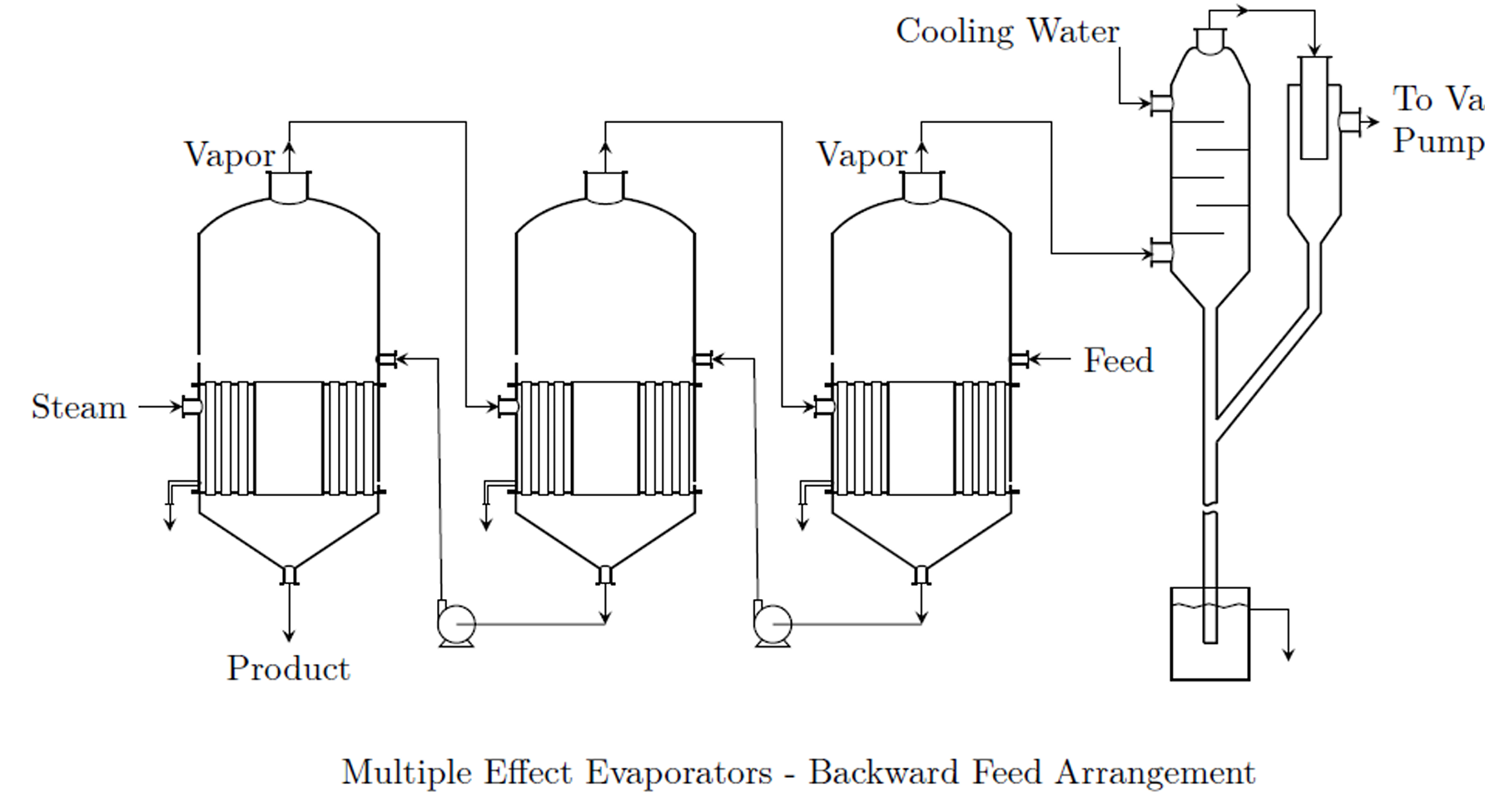42 - Evaporation
8. Multiple Effect Evaporation
-
In a multiple effect arrangement, the latent heat of the vapor product off of an effect is used to heat the following effect. Effects are thus numbered beginning with the one heated by steam. It will have the highest pressure.
-
Vapor from Effect I will be used to heat Effect II, which consequently will operate at lower pressure. This continues through the train: pressure drops through the sequence so that the hot vapor will travel from one effect to the next.
-
Normally, all effects in an evaporator will be physically the same in terms of size, construction, and heat transfer area. Unless thermal losses are significant, they will all have the same capacity as well.
-
Evaporator trains may receive their feed in several different ways. The feed order is NOT related to the numbering of effects. Effects are always numbered according to decreasing pressure (steam flow).
Forward Feed arrangements follow the pattern I, II, III. These require a single feed pump (reduced fixed costs). They typically have reduced economy (higher operating costs) since the cold feed must be raised to the highest operating temperature. These also tend to have the most concentrated liquour, which tends to be the most viscous, in the lowest temperature effects, so their may be difficulties getting a good overall heat transfer coefficient.
Backward Feed arrangements go III, II, I. These need multiple pumps to work against the pressure drop of the system; however, since the feed is gradually heated they usually have better economies. This arrangement also reduces the viscosity differences through the system and so is better for viscous solutions.
Mixed Feed arrangements offer a compromise, with the feed entering in the middle of the system (i.e. II, III, I). The final evaporation is done at the highest temperature so economies are still better than forward feed, but fewer pumps are required than in a backward feed arrangement.
Parallel Feed systems split the feed stream and feed a portion to each effect. This is most common in crystallizing evaporators where the product is likely to be a slurry.


